And the Winner is… 2017 Student Project Grant Winners Announced
On Wednesday, November 15, our eight Tech Hub student project grant semifinalists pitched their projects to a packed crowd with representatives from across the university. They explained their concepts and answered audience questions, but in the end, it came down to a vote.
We will be sharing the progress of the recipients throughout this semester and next. In September 2018, our winners will be back to present their progress and share their successes.
2017 Winners
Sensing Your Next Move
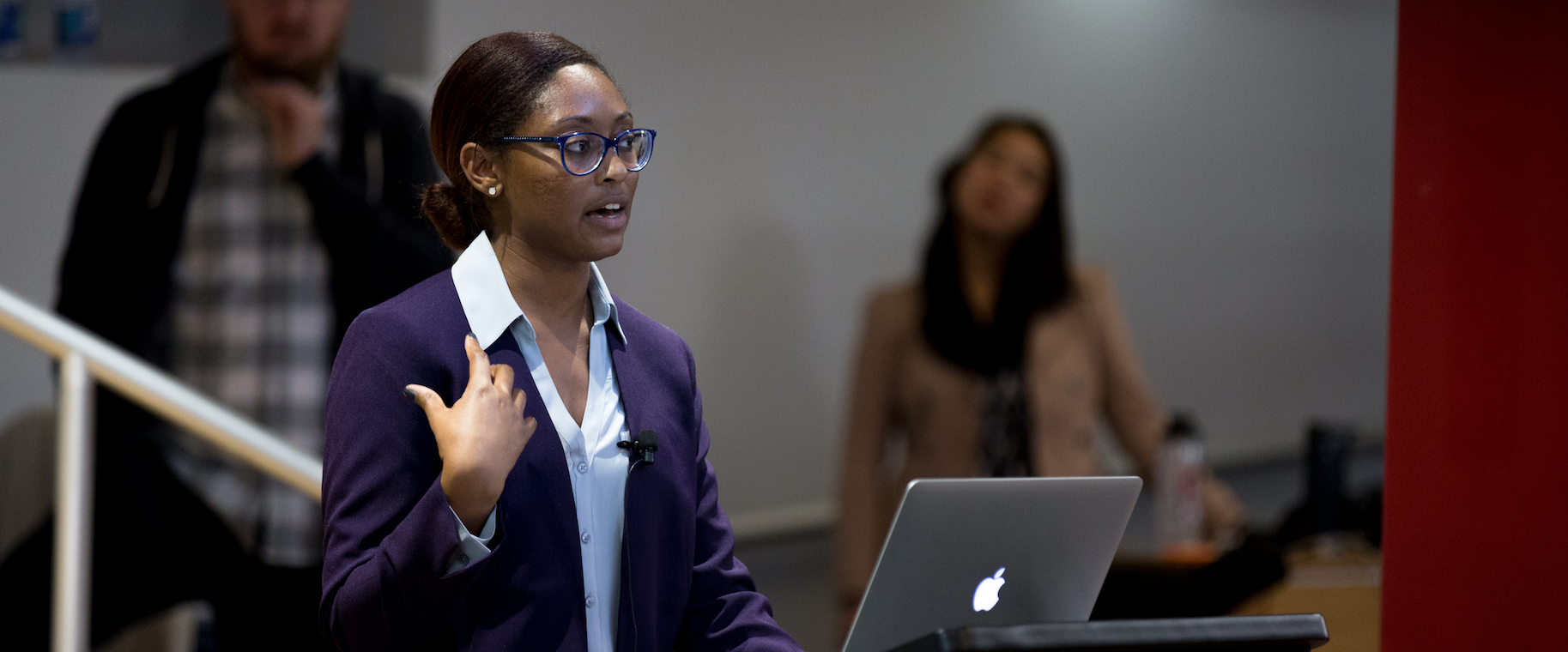 Strokes are serious business. Nearly 750,000 people in the US will suffer from a stroke this year, and daily practice of functional tasks is important to regaining motor function. Alexis Burns designed a device to encourage patients to complete these daily tasks, as well as provide doctors with much-needed insight into patient behavior. This device uses dry textile electrodes sewn into a shirt to track patient movement and sends data to doctors who can use it to develop treatment. With funding, Burns will purchase testing materials and expand the functionality of the device.
Strokes are serious business. Nearly 750,000 people in the US will suffer from a stroke this year, and daily practice of functional tasks is important to regaining motor function. Alexis Burns designed a device to encourage patients to complete these daily tasks, as well as provide doctors with much-needed insight into patient behavior. This device uses dry textile electrodes sewn into a shirt to track patient movement and sends data to doctors who can use it to develop treatment. With funding, Burns will purchase testing materials and expand the functionality of the device.
A New Generation of Flexible Batteries
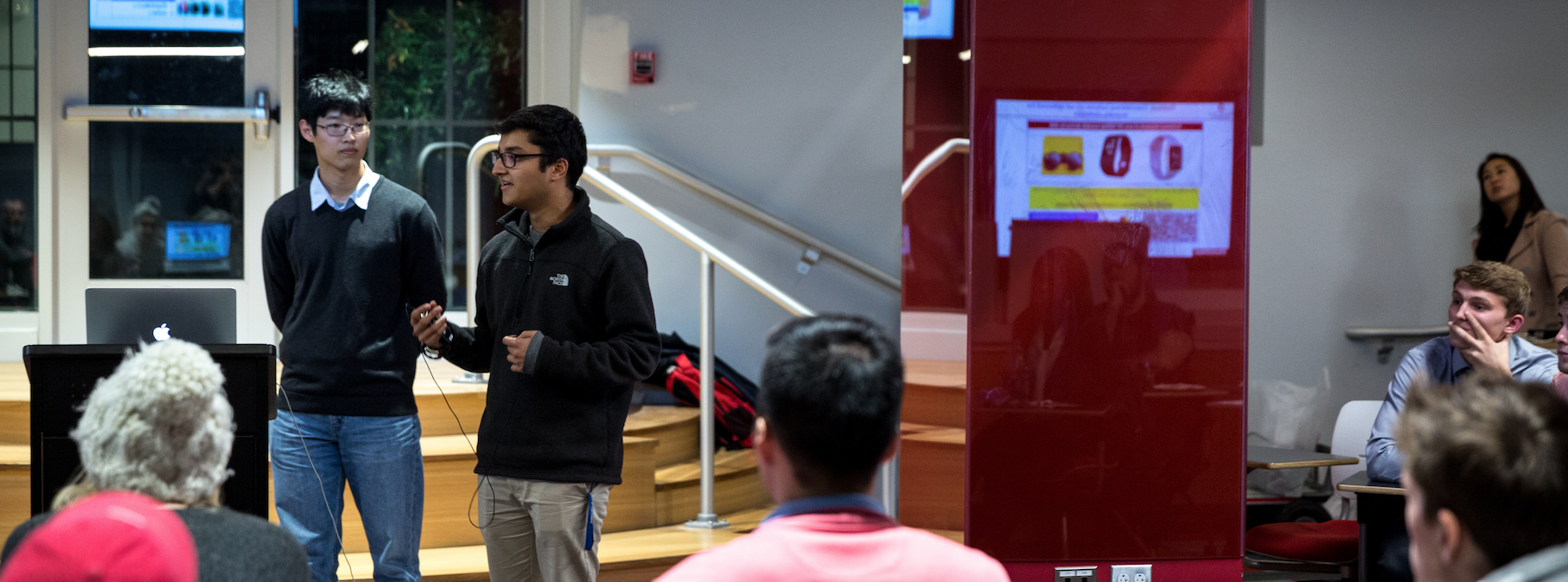 Wearable devices have a problem. It’s not the sensors or the features; it’s the batteries. The traditional batteries that power our wearable tech items were simply not intended for such an application. They are bulky, rigid and occasionally dangerous. Wesley Thio and Raman Vilhku are looking to change this with their flexible batteries powered by electrochemical fabrics. By printing battery cells on a fabric, the team hopes to create a viable alternative for our traditionally battery powered devices. With funding, they will work to streamline a manufacturing process that could operate at scale, and purchase sensors to connect their powered fabrics with actionable results.
Wearable devices have a problem. It’s not the sensors or the features; it’s the batteries. The traditional batteries that power our wearable tech items were simply not intended for such an application. They are bulky, rigid and occasionally dangerous. Wesley Thio and Raman Vilhku are looking to change this with their flexible batteries powered by electrochemical fabrics. By printing battery cells on a fabric, the team hopes to create a viable alternative for our traditionally battery powered devices. With funding, they will work to streamline a manufacturing process that could operate at scale, and purchase sensors to connect their powered fabrics with actionable results.
Digitizing Disease
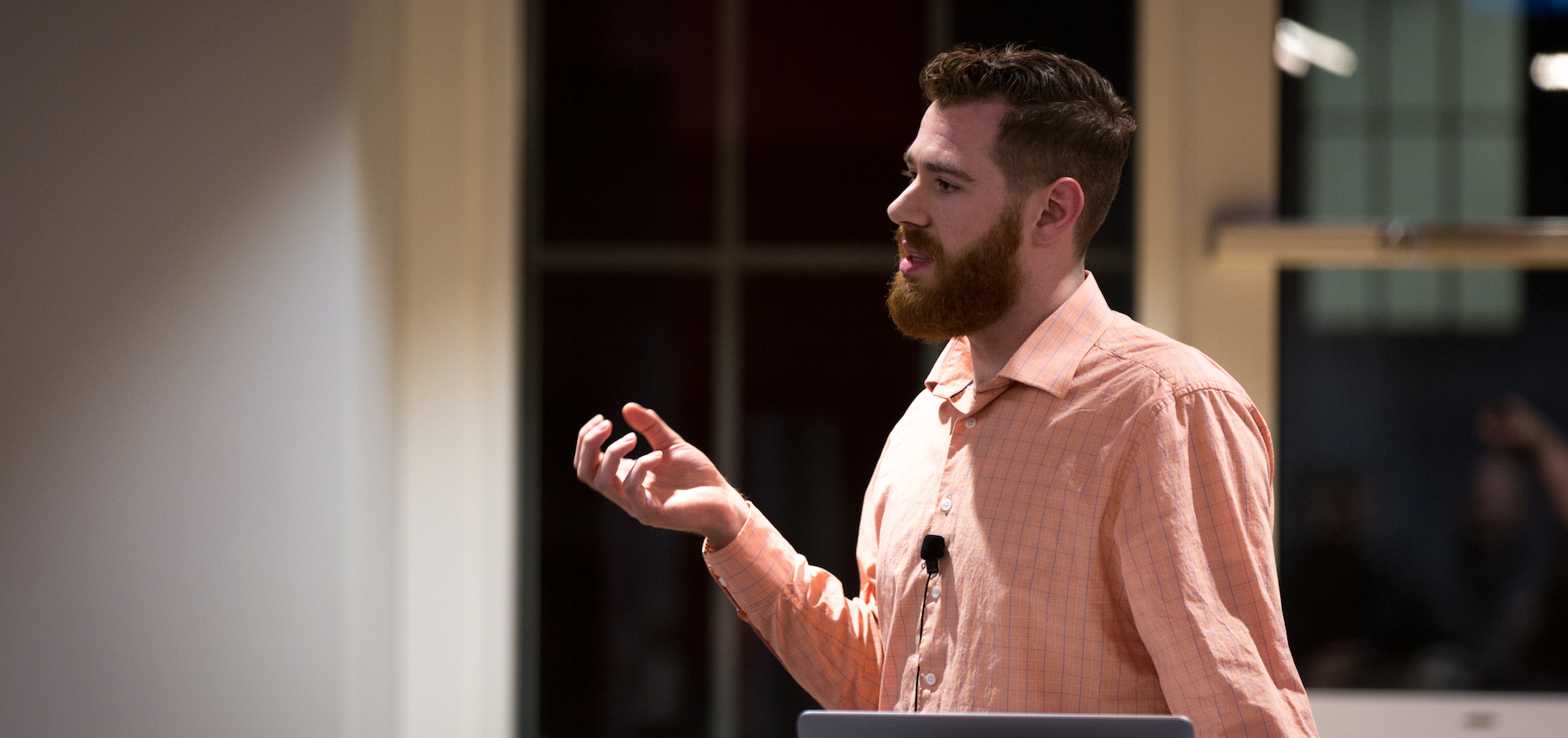 Plants are a lot like us—they get sick. When pathogens spark epidemics in plants, it can spell disaster for communities or regions that rely on a single crop. Alex Turo is working to make the global food system more secure for the nearly 1.75 billion people who rely on a single plant for sustenance or livelihood. With funding, Turo will be able to finalize the design of a computational model, or a “digital plant,” that will allow scientists to test how different pathogens will affect a plant. He hopes this model will allow for the creation of crops that are increasingly disease resistant.
Plants are a lot like us—they get sick. When pathogens spark epidemics in plants, it can spell disaster for communities or regions that rely on a single crop. Alex Turo is working to make the global food system more secure for the nearly 1.75 billion people who rely on a single plant for sustenance or livelihood. With funding, Turo will be able to finalize the design of a computational model, or a “digital plant,” that will allow scientists to test how different pathogens will affect a plant. He hopes this model will allow for the creation of crops that are increasingly disease resistant.
Spellbreaker
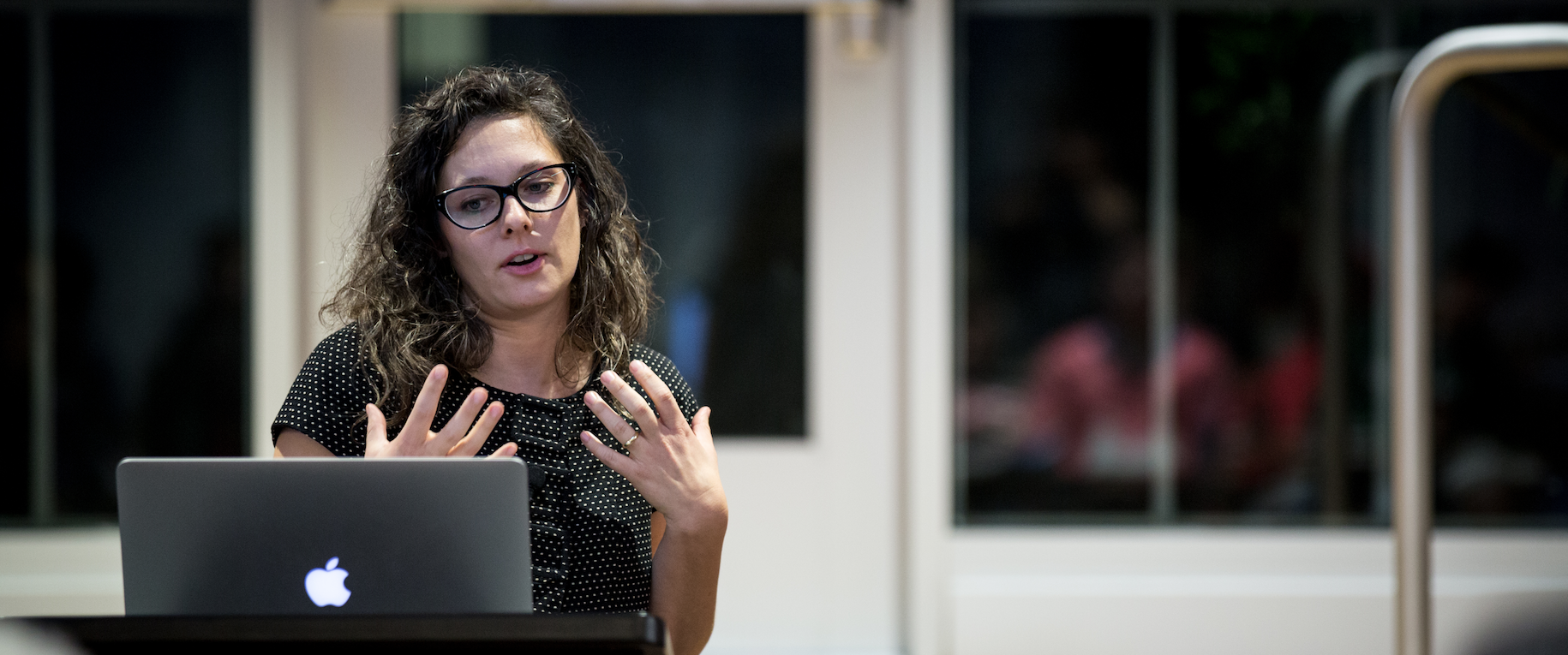 Jacklyn Brickman wants to help us understand our connection to the world around us. With her techno-sculptural work “Spellbreaker” she underscores the connection between humanity and the natural world through a drip of black walnut ink. This ink, which represents the amount of CO2 that sixty trees would absorb per second, is deposited in a tree stump whenever a viewer approaches a wooden apparatus and breathes on the sensor. This breath triggers the ink and eventually overflows the stump. The technical elements of this work including CO2 sensors are made possible by Tech Hub funding. We will share exhibition information on our blog in the coming months.
Jacklyn Brickman wants to help us understand our connection to the world around us. With her techno-sculptural work “Spellbreaker” she underscores the connection between humanity and the natural world through a drip of black walnut ink. This ink, which represents the amount of CO2 that sixty trees would absorb per second, is deposited in a tree stump whenever a viewer approaches a wooden apparatus and breathes on the sensor. This breath triggers the ink and eventually overflows the stump. The technical elements of this work including CO2 sensors are made possible by Tech Hub funding. We will share exhibition information on our blog in the coming months.
Runners Up
In Your Skin VR
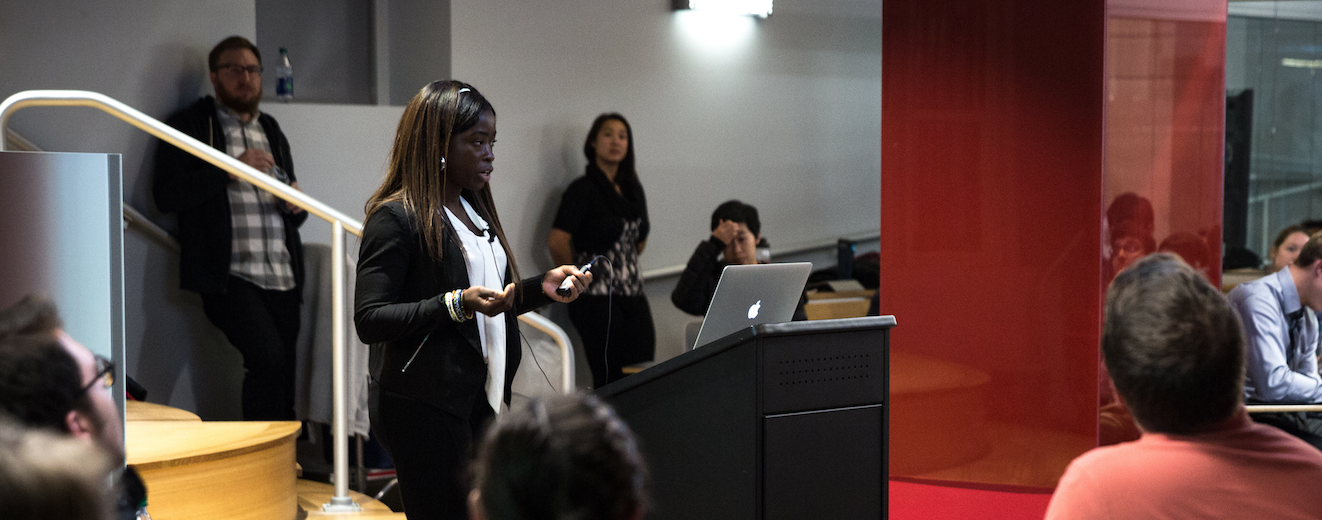 What if we were able to experience the way another person feels? Maggie Barrie believes this would spark systematic changes in our perception of others and increase empathy levels, while also having a hand in dismantling institutionalized racism. Her vision is to supplement current diversity training programs with virtual reality applications that encourage empathy and spark learning through gamification.
What if we were able to experience the way another person feels? Maggie Barrie believes this would spark systematic changes in our perception of others and increase empathy levels, while also having a hand in dismantling institutionalized racism. Her vision is to supplement current diversity training programs with virtual reality applications that encourage empathy and spark learning through gamification.
3-D Printing our Landscape
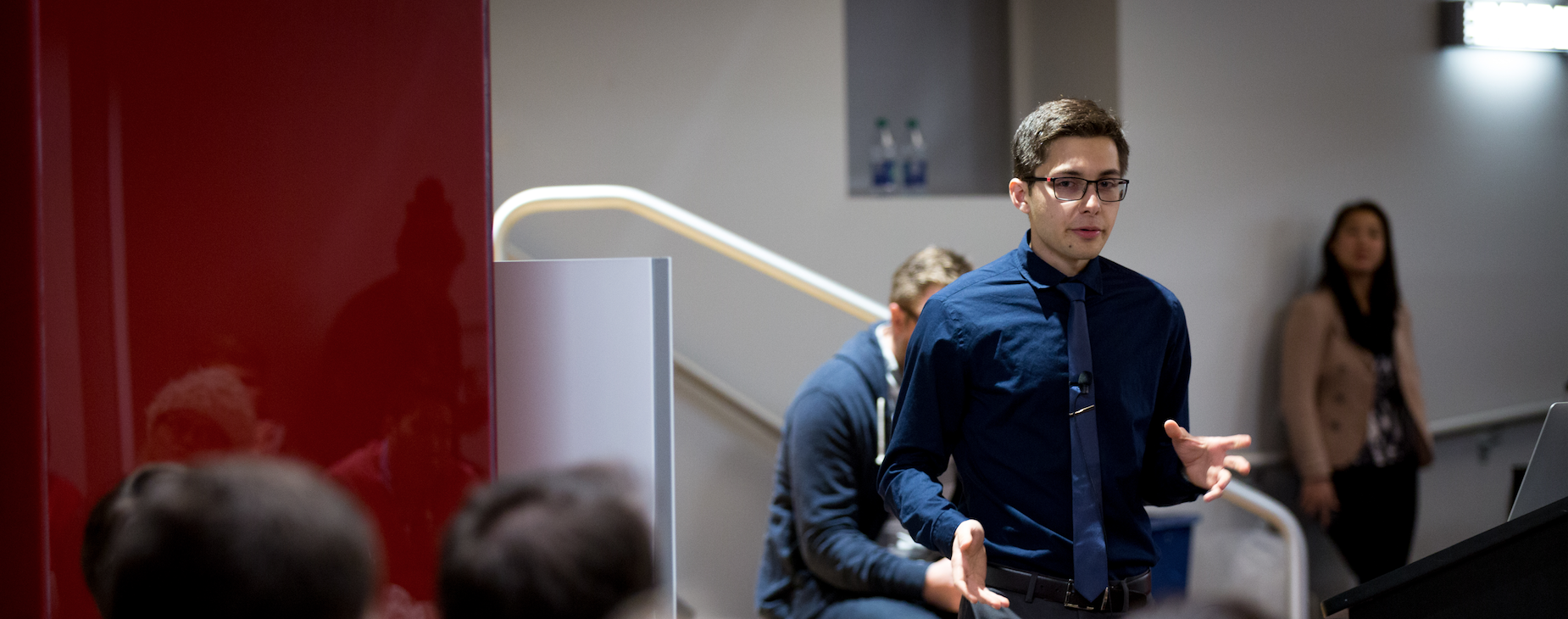 What is the biggest thing you can 3-D print? A book? A table? Andrew Davis wants to think bigger. Traditional 3-D printers have one main limitation—they can only print items smaller than their frame. Davis envisions a future where a compact 3-D printer can create objects of any size. The landscape printer he has developed is designed to print with unconventional materials such as dirt and is suspended by wires such that it can be fastened to make a printing area of nearly any size.
What is the biggest thing you can 3-D print? A book? A table? Andrew Davis wants to think bigger. Traditional 3-D printers have one main limitation—they can only print items smaller than their frame. Davis envisions a future where a compact 3-D printer can create objects of any size. The landscape printer he has developed is designed to print with unconventional materials such as dirt and is suspended by wires such that it can be fastened to make a printing area of nearly any size.
Humanitarian Engineering in Gambia
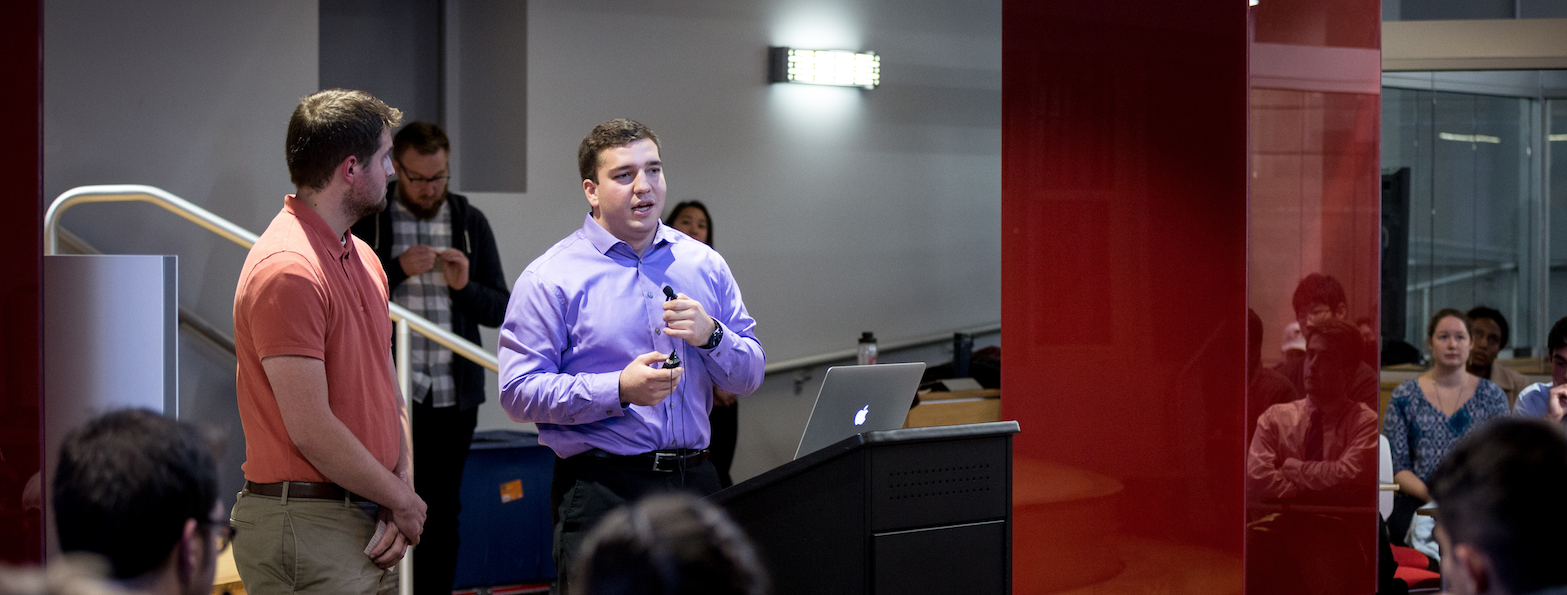 Thoughtful engineering has the possibility to change outcomes for communities around the world. The Ohio State chapter of Engineers Without Borders has worked with the Naju community of Gambia to create engineering solutions for infrastructure issues within the village. The group plans to travel to Gambia to help construct a molded concrete and wire fence as well as an irrigation system to help residents maintain crop fields through the nearly eight-month dry season.
Thoughtful engineering has the possibility to change outcomes for communities around the world. The Ohio State chapter of Engineers Without Borders has worked with the Naju community of Gambia to create engineering solutions for infrastructure issues within the village. The group plans to travel to Gambia to help construct a molded concrete and wire fence as well as an irrigation system to help residents maintain crop fields through the nearly eight-month dry season.
Laser Vision
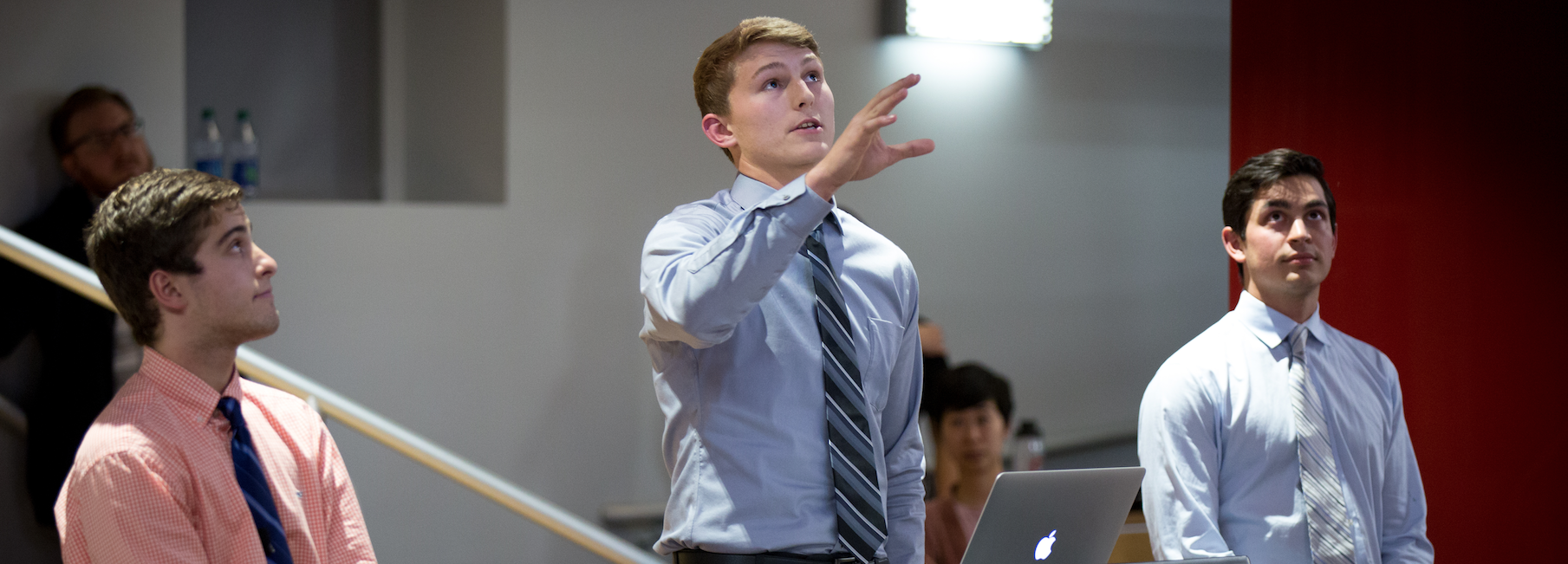 Can sound help people to see? Danny Freyschlag, Kohl Kuntze, Kyle McIntyre and Cory Miller believe it can. They have created Laser Vision, a technology for the visually impaired that interprets depth of surroundings through sound output. This model was demonstrated at HackOHI/O and the team hopes to continue prototyping work in the coming year.
Can sound help people to see? Danny Freyschlag, Kohl Kuntze, Kyle McIntyre and Cory Miller believe it can. They have created Laser Vision, a technology for the visually impaired that interprets depth of surroundings through sound output. This model was demonstrated at HackOHI/O and the team hopes to continue prototyping work in the coming year.
Thanks to all who applied, presented and were involved in voting. We were blown away by the quality and innovation evident in the proposals we received. We will be sharing the progress of the grantees throughout the next semester.
If you are interested in grant funding for your tech project, our next round of applications will open August 2018.

